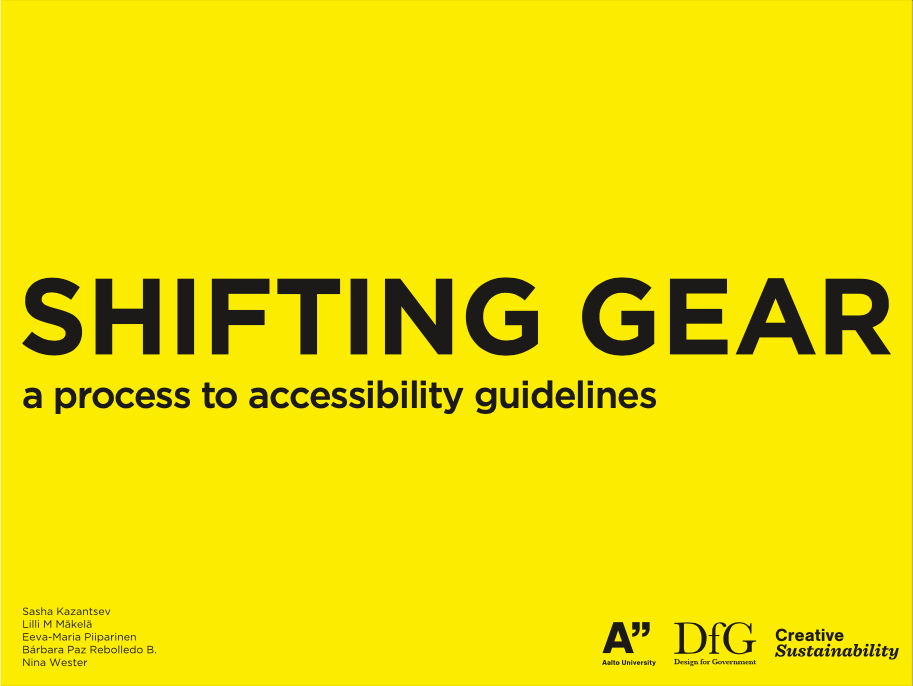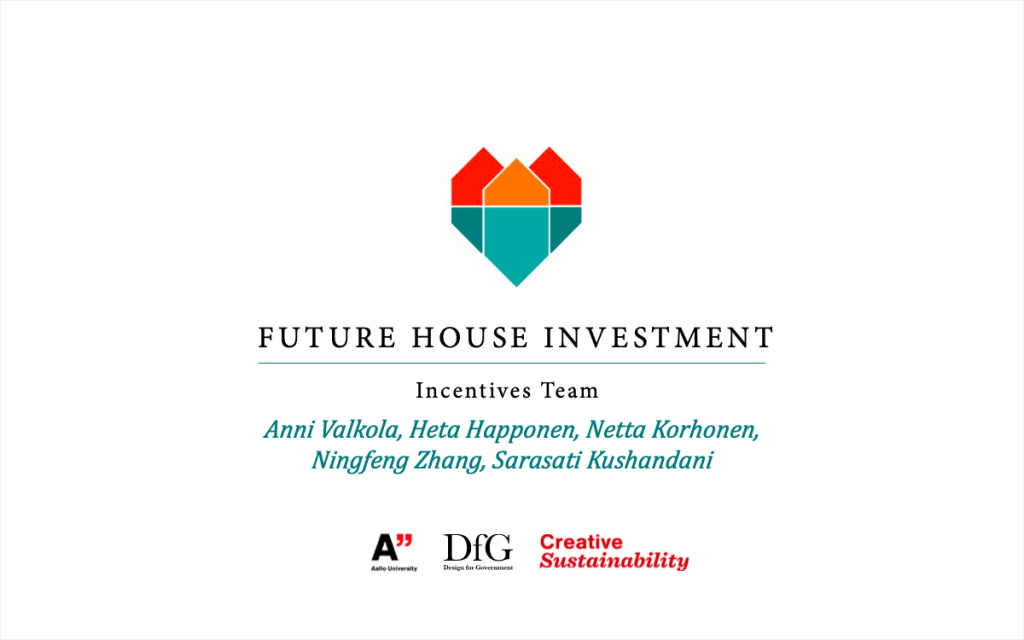Project description
Accessibility in both old and new buildings is of growing national importance due to the ageing population that should be able to live independently at their homes in near future. The theme touches many other different groups as well – families with babies, people with disabilities or injury, just to name a few. The Ministry of the Environment is in the process of renewing Regulations and Guidelines for Barrier-free Building – that is accessibility of buildings.
Students of the Design for Government course are given a chance to contribute to this process from many different angles: how the current regulations work in practice, how to communicate them in comprehensible and attractive ways, how new incentives or new structure of incentives might promote accessibility, and which existing or new practical designs for implementation would best serve the needs of the target groups.
Sub-theme 1. Communication
Under this theme, students will explore how the components of the law in different levels – act, decree, regulation, and recommendation – are comprehended (or miscomprehended) and how they affect the implementation of the law in practical solutions. As the Ministry is renewing the accessibility regulations and guidelines, the students have the freedom to propose new tools that promote the aims of the law in practice or improve existing ones. This sub-theme deals with also other potential tools for communication – online, multimedia, or outdoor installations, just to mention a few.
Examples of potential outcomes: 1) More comprehensive form of the law/regulation 2) New tools that translate the regulation into practice replacing the old guidelines
Sub-theme 2. Incentives
Under this theme, the students will closely look into incentives for barrier-free buildings currently offered by the government: how they enable or hinder preferred outcomes, how they could be modified or redesigned to fit the purpose. The aim is to develop policy tools that makes the accessibility of building an attractive pursuit for the key stakeholders. The theme is aimed towards redesign of the current schemes or to new proposals in both non-monetary and monetary incentives.
Examples of potential outcomes: new incentive schemes at different levels of government for enhancing accessibility of buildings
Sub-theme 3. Implementation
Under this theme, students will examine people’s needs and aspirations regarding accessibility, and explore exemplary designs for implementation with systemic potential. The students should work closely with different user groups to find out the important touch points for accessibility in a building or its surroundings. The students will produce the designs taking typical existing ones (e.g. those of accessible bathroom) as a starting point. This does not only mean the floor plan but also the written requirements that can be flexibly applied in buildings, spaces or outdoor built environment.
Read more about the process in the blogs!
- Systems Thinking Block – March 31-April 11, 2014
- Inspiration Block – April 28-May 16, 2014
- Mid-term Review: Accessibility Theme – May 9, 2014
This project was showcased during the 2014 Final Show.
Student proposals
Shifting Gear: a process to accessibility guidelines
Project by Sasha Kazantsev, Lilli M Mäkelä, Eeva-Maria Piiparinen, Bárbara Paz Rebolledo B and Nina Wester

Video of presentation
Future House Investment: Incentives Team
Project by Anni Valkola, Heta Happonen, Netta Korhonen, Ningfeng Zhang and Sarasati Kushandani

Video of presentation
Accessibility Implementation
Project by Andrea Valladares, Anna Krivtsova, Johanna Laukkanen, Philip Hector and Samuli Räisänen

Video of presentation
